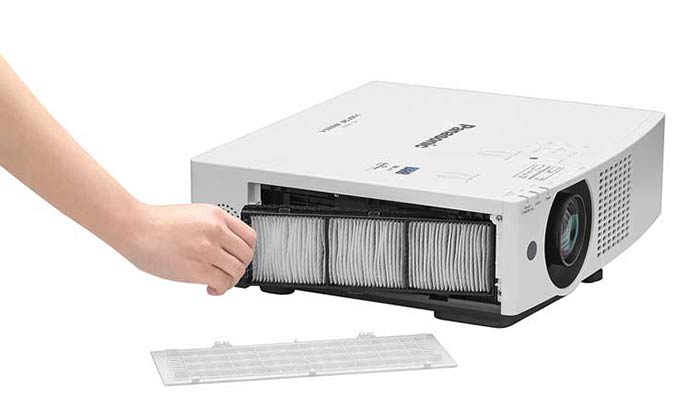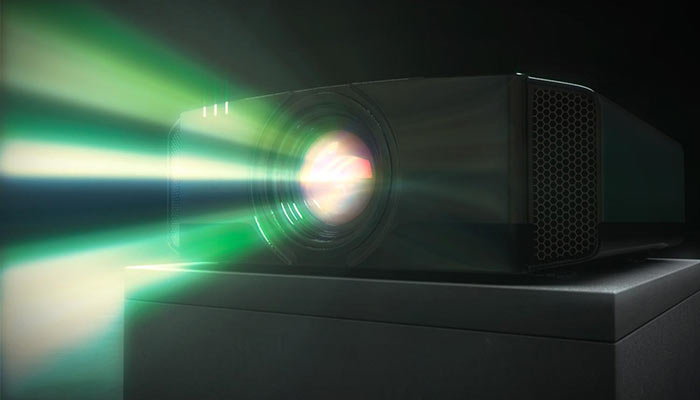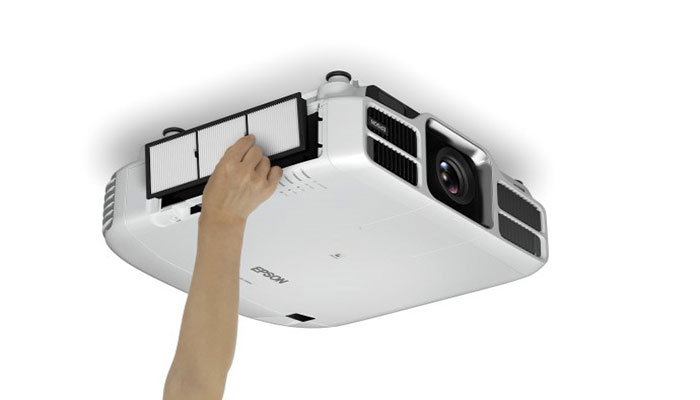Table of Contents
If you’ve been searching for a way to revive your projector’s picture quality, we have good news for you! A dirty projector filter is a culprit behind many common picture issues. Luckily, it’s not hard to fix the problem yourself. Read on below for a step-by-step guide on how to clean your projector filter.
Open up your projector and locate the optical lens in its center (we recommend that you first cover the opening with something like a paper towel so dust doesn’t get into its sensitive parts). If there are any big chunks of dirt or grime in front of this lens then use a cotton swab saturated with rubbing alcohol to wipe them away.
We recommend removing the lens assembly from its casing and giving it a good cleaning to avoid scratching it. If you don’t have access to an optical lens removal tool, we suggest using a piece of cotton swab soaked with rubbing alcohol. For this step, be careful not to rub too hard.
If there are no chunks of dirt or grime in front of the projector’s optical lens then you’re ready to begin cleaning it. Turn on your projector and position its lens at a 45-degree angle upward so that it can be cleaned easily.
The best way to clean the lens is with a cotton swab saturated with rubbing alcohol. Using a clean, dry cotton swab (do not use paper towels or tissues which could create static electricity) hold the swab perpendicular to the screen and gently wipe in a circular motion.
Step by Step Process to Clean Projector Filter
Step 1: Inspect your filter
To ensure that your filter is clean, first take it out of the projector. Your filter should be made of a material that is easy to remove. There are filters that are not just transparent, but also water-resistant.
These filters can be washed in a dish rack and put back in the projector without any issues. Check whether your filter has any signs of damage, for example, sand or dirt stains on it.
If there is any dust on your filter, simply use a vacuum cleaner to remove all the dust from the surface and then wipe it with a soft cloth to remove oil stain stains as well as streaks from fingerprints.
Step 2: Remove the filter from the projector
Your filter can easily be attached to the front cover of your projector using Velcro. Make sure that you are not putting pressure on your lamp. When you take out a filter from the projector, it is important to note which end is up or down because some filters have intricate designs on them.
After removing its cover, you will see that the filter has a frame made of thin material. The frame should either be glued or screwed in place in order to stay strong and secure in front of the lamp during operation. You need to remove this frame with care so that you do not damage your lamp or any other parts of your projector.
Step 3: Clean your filter
Once you know which side is up (the end that will be clean) and which is down, set a bucket of warm water on your desk or any flat surface. Now remove the Velcro that holds the filter to its frame. Take out the filter from its frame.
Put it in a washing machine and wash it with cold water for about four minutes as well as through a gentle cycle. Then dry it with a towel and apply silicone grease to maintain its anti-fogging properties and protect your projector from scratches. You can also wash the filter with warm water, using a soft cloth to remove oil stains on the surface of it, if any.
Step 4: Put the filter back into the projector
Once you are done cleaning your filter, all that you have to do is to reattach it with its frame and then apply some silicone grease on it.
You can now put the projector back together again. Make sure that your filter’s frame does not interfere with any other parts of your projector. That is all; now you know how to clean a projector filter in a safe and natural way.
What is a Projector Filter?
Projector filters aid the projection of an image on a screen, which is typically known as the projection screen or cinema screen. The projectors use optical lenses to focus light from its lamp onto a target that is inside of it, and this target, in turn, projects an image onto the screen.
Projector filters determine how much light passes through to reach this target and so control how bright or dark the image is rendered. Filters are made from different materials, such as different types of glass or different colors of optical coatings for reflection.
They help reduce rainbows and glare while also increasing contrast to make images appear more realistic.
Projector filters separate the different types of light that are produced by lamps. There are three different types of color light produced:
- Red
- Green
- Blue.
These colors are used when an image is digitalized into red, green, and blue shades that when combined together produce a full-color image.
Depending on the type of projector used, the desired filter enables precise control over the amount of each individual color that goes through to the projection screen.
Projectors operate by shining a lamp light through an aperture onto a frit or diffusing element that breaks up its rays into many small beams producing a substantially uniform light.
Projector filters are used to determine the color of this light, and several can be used at the same time. Each color filter will only let its own color through. The overlapping segments of red, green, and blue filters overlap and produce a full-color image.
The intensity of each of these colors can be adjusted independently using a method called color gain or offset if desired for special effects or a higher quality image.
Why it is necessary to clean the Projector Filter?
A projector is an essential tool for any information presentation and knowledge sharing. A projector can make the data visual and interesting to watch. The following are some methods that could be used on a regular basis to ensure that the quality of a presentation and its life span is maximized.
The first step would be to clean the filter of the projector every now and then. This ensures safe viewing from dirt particles, dust, oil, etc. One can also use compressed air or other cleaning products to help keep projectors free from damaging pollutants.
Filters can also be removed from the projector and cleaned in order to prevent embedded debris on their surface. This is important because it would serve as a common indicator of the projector’s efficiency. Filters with dangerously dirty surfaces are ones that will require replacement by the user, while clean filters are ones that can last for a longer time.
With an air-filtered image projected onto them, projectors are more efficient because they only require the use of one unit of air to clear out all the pollutants within it. This decrease in cost is vital when trying to keep costs down and maintain profitability and should not be taken lightly or ignored.
Bottom Line
With so many things to do in a day, it’s important to know how to clean projector filters. Now you can have the best picture possible without having to worry about them getting very dirty or filament clogging up the lens.
Just follow our steps above to clean the projector filters properly.
Related Article :






